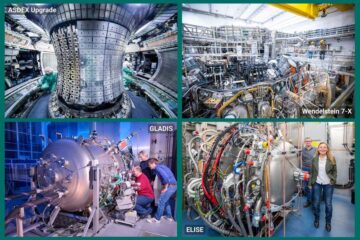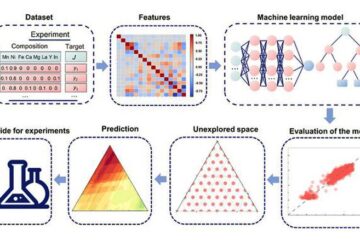Tailor-made drugs to treat epilepsy or cardiovascular diseases

Molecular interactions of the receptor blocker JNJ-31020028 (light green; nitrogen atoms highlighted in blue, oxygen atoms in red) at the human Y2 receptor (grey); pdb: 7DDZ. With seven helices, the receptor sits in the cell membrane and is accessible to its ligands from the outer side.
Diagram: Dr Anette Kaiser, Leipzig University
Molecular blueprint for important receptor deciphered
In order for a drug to be effective at the right places in the body, it helps if scientists can predict as accurately as possible how the molecules of that drug will interact with human cells. In a joint research project, scientists from Collaborative Research Centre 1423 at Leipzig University and the Chinese Academy of Sciences in Shanghai have succeeded in elucidating such a structure, namely that of the neuropeptide Y receptor Y2 with one of its ligands. This is the first time that a molecular blueprint for this receptor is available, which will enable the development of tailor-made new drugs, for example to treat epilepsy or cardiovascular diseases. The researchers’ findings have now been published in Nature Communications.
The Y2 receptor plays an important role, especially in the peripheral nervous system and in the brain, as it is considered one of the “satiety receptors”. It also plays a role in epilepsy as well as in cardiovascular diseases. If these diseases are to be treated with drugs that block the Y2 receptor, it is important to ensure that the drug can target this receptor precisely and exclusively, because some closely related receptors would have exactly the opposite effect. When developing novel drugs, it is therefore essential to obtain highly targeted compounds and to have precise knowledge of their molecular properties.
Researchers led by Professor Annette Beck-Sickinger and Dr Anette Kaiser at Leipzig University have succeeded in showing on the molecular level how substances can block the Y2 receptor. Working with their colleagues in Shanghai, they were able to explain the crystal structure with a bound ligand, validate it by means of numerous biochemical investigations, and transfer it to other systems. The new study also reveals that Y2 receptor blockers bind differently than comparable molecules at the closely related Y1 subtype. This will facilitate further knowledge-based development of selective compounds at both receptors.
The investigation of this receptor family with its endogenous ligands as well as other clinically relevant compounds is one focus of Collaborative Research Centre 1423. The CRC 1423 is a research project being funded for four years by the German Research Foundation (DFG), in which four funding institutions are involved: Leipzig University, Martin Luther University Halle-Wittenberg, Charité – Universitätsmedizin Berlin and the Max Delbrück Center for Molecular Medicine. Researchers from these institutions with backgrounds in biochemistry, biomedicine and computational science are collaborating on an interdisciplinary basis to gain a comprehensive understanding of the effects of structural dynamics on the function of G protein-coupled receptors. The Collaborative Research Centre comprises a total of 19 sub-projects.
Media Contact
All latest news from the category: Life Sciences and Chemistry
Articles and reports from the Life Sciences and chemistry area deal with applied and basic research into modern biology, chemistry and human medicine.
Valuable information can be found on a range of life sciences fields including bacteriology, biochemistry, bionics, bioinformatics, biophysics, biotechnology, genetics, geobotany, human biology, marine biology, microbiology, molecular biology, cellular biology, zoology, bioinorganic chemistry, microchemistry and environmental chemistry.
Newest articles

Unlocking the secrets of supercritical fluids
A study now published in Nature Communications brings remarkable insights into the enigmatic behavior of supercritical fluids, a hybrid state of matter occupying a unique space between liquids and gases,…

Top marks for IPP facilities
The European research consortium EUROfusion has had more than 100 fusion facilities in its member states independently assessed. The facilities of the Max Planck Institute for Plasma Physics (IPP) were…

Machine learning accelerates discovery of high-performance metal oxide catalysts
Researchers have harnessed the power of artificial intelligence to significantly advance the discovery and optimization of multicomponent metal oxide electrocatalysts for the oxygen reduction reaction (ORR). This breakthrough has the…





















